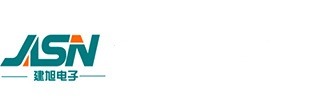How to choose a suitable BMS signal transformer?
Time:2025-04-01
Views:863
If you also want to choose a BMS signal transformer that suits you, why not follow the editor to take a look. To choose a suitable BMS signal transformer, we can consider the following aspects:
1、 Core performance requirements
1. Electrical isolation capability
● Working voltage: Choose a model that supports 1000-1600VDC working voltage to ensure compatibility with the high-voltage battery pack.
● Isolation voltage: Transformers with isolation voltage ≥ 6400VDC/4242VAC are preferred to cope with transient overvoltage and system fault risks.
● Insulation material: Designed with fully insulated windings or three-layer insulated wires, certified for safety such as IEC 62368-1.
2. Anti interference design
● Built in common mode choke to suppress high-frequency electromagnetic interference (EMI) and ensure signal transmission stability.
● Supports low insertion loss (≤ -0.25dB@4MHz )Reduce signal attenuation.
3. Environmental adaptability
● Temperature range: It needs to cover -40 ° C to+125 ° C, and some industrial scenarios need to be extended to+150 ° C.
● Seismic resistance and sealing performance: Suitable for vibration or high humidity scenarios such as automobiles and energy storage, fully sealed structures are preferred.
2、 Key parameter matching
Parameter Recommended indicators Describe
Leakage inductance ≤ 0.5 μ H reduces signal delay and energy loss
DC resistance (DCR) ≤ 0.7 Ω (single-sided) reduces heat generation and power loss
Common mode rejection ratio (CMRR) ≥ -30dB@1-10MHz Enhance noise suppression capability
Insulation resistance ≥ 400M Ω @ 250VDC ensures long-term insulation reliability
3、 Application scenario adaptation
New energy vehicles
● Compatible with SPI/isoSPI protocol and compatible with mainstream BMS chips (such as ADI LTC6804, TI BQ796xx).
● Prioritize the selection of AEC-Q200 certified products to ensure high temperature resistance and vibration resistance.
Energy Storage System (ESS)
● Support multi-channel design (single/dual channel) to meet the management needs of multiple battery series connections.
● Require high integration and simplified system layout (such as ultra-thin structures with a thickness of ≤ 4mm).
Industrial equipment (such as charging stations)
● Choose surface mount (SMD) packaging to meet the needs of automated production.
● Industrial safety certification such as UL/IEC is required.
5、 Selection process
By comprehensively evaluating the above dimensions, signal transformers that are suitable for specific BMS systems can be efficiently screened.
4、 Manufacturer and Product Recommendations
● Wohu BMS series: supports 6400VDC isolation voltage, integrates common mode choke, suitable for electric vehicles and energy storage scenarios.
● Bourns SM91542AL: Compliant with AEC-Q200 standard, compatible with multiple BMS protocols, suitable for complex electromagnetic environments.
● Jianxu Electronics New Energy Series: Multi channel design, low insertion loss, suitable for high interference scenarios such as photovoltaic inverters.
5、 Selection process
1. Clear requirements: Determine core parameters based on application scenarios (voltage level, environmental conditions).
2. Protocol verification: Confirm the compatibility of the communication protocol with the BMS main control chip.
3. Structural matching: Evaluate installation space and choose ultra-thin or modular packaging.
4. Reliability testing: Manufacturers are required to provide verification reports such as high and low temperature cycling and pressure resistance testing.
By comprehensively evaluating the above dimensions, signal transformers that are suitable for specific BMS systems can be efficiently screened.

